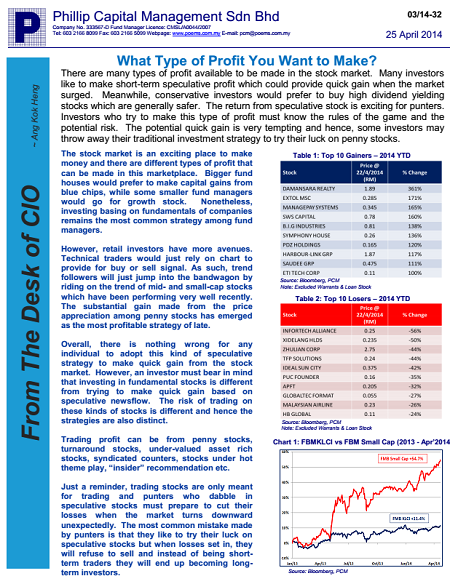Speculation Taking a Risk to Gain Profit For Dummies
Post on: 16 Март, 2015 No Comment

Speculation involves profiting from the change in the price of an asset. No matter what kind of asset you consider, the desired change in price is an increase when you sell it. In other words, all speculation involves buying low and selling high.
Currencies can also be bought and sold for a profit. Types of speculation with exchange rates differ, but they all have one thing in common: an expectation regarding the change in the exchange rate in the near future.
Of course, you can buy and sell currency in spot markets or derivative markets. In spot markets, assets are traded for immediate delivery. In derivative markets, although the agreement is done today, the actual transaction (the buying or selling of foreign currency) takes place at a future date (for example, two months from now).
The following numerical examples involve a little more than just buying or selling foreign currencies. For simplicity, the following examples assume that you want to buy a foreign currency and put it in an interest-earning account. Now this doubles the sources of your profits: You can make money from the changes in the exchange rate and the interest earned on the foreign currency.
When speculation goes right
Suppose USA Bank expects the Swiss franc (SFR) to appreciate from $1.069 to $1.112 a year from now. USA Bank borrows $10,000,000 at an interest rate of 1.5 percent for a year, converts it into Swiss francs at the current rate, and deposits the funds into a Swiss bank account at Helvetica Bank for a year at an annual interest rate of 1.75 percent.
A year from now, USA Bank withdraws the Swiss francs, converts them into dollars in the future spot market, and hopes to make a profit.
Here are the steps in calculating the banks profits:
USA Bank converts $10,000,000 into Swiss francs at the exchange rate of $1.069 and receives SFR9,354,537 ($10,000,000 / 1.069).
USA Bank deposits SFR9,354,537 into a savings account with Helvetica Bank for a year at an annual interest rate of 1.75 percent.
Therefore, you need to calculate how much money USA Bank receives from the Swiss bank a year from now.
The formula that relates the future value (FV ) to the present value (PV ) is:
The previous formula indicates that the future value is greater than the present value by the interest factor (1 + R ). Suppose that you currently have $100, which is the present value (PV). In a year, you want todays $100 to become $110, which is the future value (FV). Plug these numbers into the equation:
$110 / $100 = 1 + R = 1.1
Note that dollars cancel in the equation. Future value is 10 percent greater than present value, indicating an interest rate (R ) of 10 percent.
Now you can manipulate the basic formula, depending upon what is unknown in a situation. In the USA Bank example, you know the present value (PV ) and the interest rate (R ). Therefore, the unknown variable is the future value (FV ). The next formula shows that the future value (FV ) equals the present value (PV ) multiplied by the interest factor (1 + R ):
FV = PV x (1 + R )
Now you can plug in the known variables in the previous equation. You know that USA Bank has SFR9,354,537 and that the annual interest rate is 1.75 percent. Therefore, the future value is:
FV = SFR9,354,537 x (1+0.0175) = SFR9,518,241
So USA Bank will receive SFR9,518,241 a year from now.
Suppose USA Bank is correct in its expectation, and the Swiss franc does appreciate to $1.112 a year from now.
Therefore, USA Bank withdraws SFR9,518,241 from Helvetica Bank, converts it into dollars, and receives $10,584,284 (SFR9,518,241 x $1.112).
But wait! USA Bank still needs to pay off its loan a year from now at the interest rate of 1.5 percent.
Here you can also use the future value formula, where the present value is the amount of the loan, $10,000,000, and the interest rate is 1.5 percent:

FV = $10,000,000 x [1 + 0.015] = $10,150,000
Therefore, after paying off the loan, USA Bank has a profit of $434,284 ($10,584,284 $10,150,000).
To calculate USA Banks rate of return on this speculation, calculate the percent change between the amount of money the bank received and paid:
This result suggests that USA Bank received an annual rate of return (or profit) of 4.28 percent from this speculation. But be careful when you call it a profit. In this example, youre not provided with alternative investment opportunities for USA Bank in the U.S. or elsewhere.
As long as the rate of return USA Bank would have received in the U.S. or anywhere in the world is below 4.28 percent (holding the risk constant), this example shows speculation that went right.
When speculation goes wrong
Now you see how USA Bank can lose money in speculation. As in the previous example, USA Bank expects an appreciation of the Swiss franc (SFR) from $1.069 to $1.112 in 60 days. USA Bank borrows $10,000,000 at an interest rate of 1.5 percent for 60 days, converts it into Swiss francs at the current rate, and deposits the funds into an account at Helvetica Bank for 60 days at an interest rate of 1.75 percent.
At the end of the 60-day period, USA Bank converts its Swiss francs into dollars.
Therefore, most of your calculations associated with the previous example are also correct here, meaning that USA Bank converts $10,000,000 into Swiss francs and receives SFR9,354,537. Then it deposits the money with Helvetica Bank for 60 days at an interest rate of 1.75 percent. At the end of the 60-day period, USA Bank receives SFR9,381,821.
But suppose that USA Bank is wrong this time in terms of its expectations regarding the future spot rate. As USA Bank withdraws SFR9,381,821 from Helvetica Bank, it observes that the Swiss franc has depreciated from $1.069 to $1.059 instead of appreciating to $1.112.
In this case, USA Bank receives $9,935,348 (SFR9,381,821 x 1.059), which is less than the payment due on the loan ($10,025,000). In this case, USA Bank suffers a loss of $89,652 ($9,935,348 $10,025,000).
- Add a Comment Print Share














